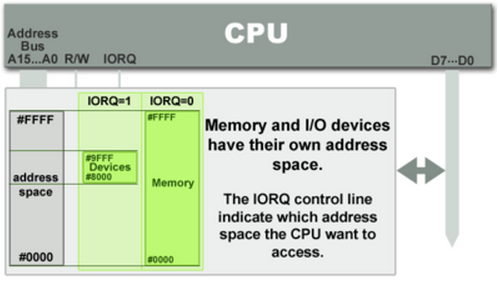

#MEMORY MAPPED FILE CODE#
Redistributions of source code must retain the above copyright notice, this list of conditions and the following disclaimer.Redistribution and use in source and binary forms, with or without modification, are permitted provided that the following conditions are met: ifmstream can be used in place of std::ifstream. It interfaces a file-based streambuffer ( filemappingbuf) with the high-level interface of std::istream. Ifmstream provides a high-level interface to read data from memory-mapped files as input streams. fmstream can be used in place of std::fstream or std::ofstream. It interfaces a file-based streambuffer ( filemappingbuf) with the high-level interface of std::iostream. That is, the views contain identical copies of the file on disk.įmstream provides a high-level interface to read/write data from/to memory-mapped files as input/output streams. When multiple processes use the same file mapping object to create views for a local file, the data is coherent. When the process needs data from a portion of the file other than what is in the current file view, it can unmap the current file view, then create a new file view. The file views created by each process reside in the virtual address space of that process.

A process can create multiple views for a file mapping object. A process manipulates the file through the file views.

When the pages of the file mapping object are swapped back in, they are restored from the file.Ī file view can consist of all or only part of the file mapping object. This means that when the system swaps out pages of the file mapping object, any changes made to the file mapping object are written to the file. The file mapping object can consist of all or only part of the file. flush ().The file on disk can be any file that you want to map into memory, or it can be the system page file. Pub fn load_file ( & self, file: & str ) mmap.
#MEMORY MAPPED FILE HOW TO#
The snippet below shows how to read a text file by memory mapping it (memory map creation highlighted). Other than that, we need to create a memory mapped buffer and pass it on to the actual reader creation. My input files may or may not be gzipped, so my Read objects need to be wrapped up in a Box, since its size is not known at compile time. In my case, since I only need to read text files line by line, reading is the easy part. To that purpose, we will use the memmap crate. I was actually unable to find any working snippets with all the parts I needed, so I’m documenting it in this post in case someone else is in the same situation I was. And the lack of available documentation and examples does not help. Here’s the thing though: working with memory mapped files in Java is super straightforward. Using memory mapped files helps a lot in avoiding copies and speeding up the reading and writing operations that’s something I tried out in the Java version and have come to also re-implement in Rust. Then I need use them to generate an octree that represents the LOD structure, and finally write another metric ton of binary files back to disk. In this project, I need to read a metric ton of gzipped csv Gaia catalog files, parse and process them into a functional in-memory catalog with cartesian positions, velocity vectors, RGB colors, etc. In my re-implementation of the Gaia Sky level-of-detail (LOD) catalog generation in Rust I have been able to roughly halve the processing time, and, even though I do not have concrete numbers yet, everything points towards a drastic decrease in memory usage as well.


 0 kommentar(er)
0 kommentar(er)
